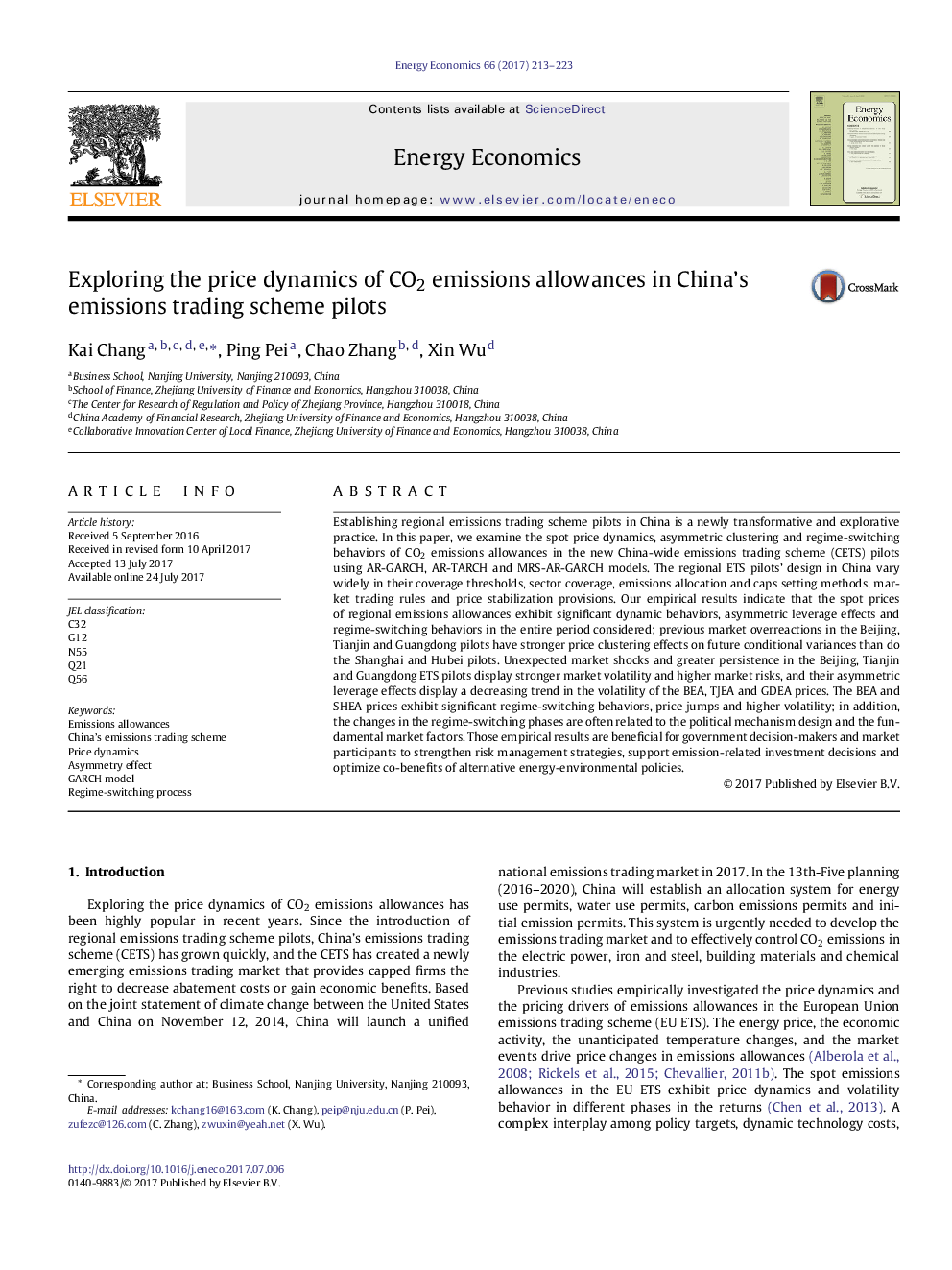| کد مقاله | کد نشریه | سال انتشار | مقاله انگلیسی | نسخه تمام متن |
|---|---|---|---|---|
| 5063590 | 1476697 | 2017 | 11 صفحه PDF | دانلود رایگان |

- China's emissions allowances (CEA) are newly emerging financial assets.
- Regional emissions allowances prices exhibit significant dynamic behaviors.
- BEA, TJEA, GDEA pilots have stronger price clustering effects.
- BEA and SHEA prices exhibit significant regime-switching behaviors.
Establishing regional emissions trading scheme pilots in China is a newly transformative and explorative practice. In this paper, we examine the spot price dynamics, asymmetric clustering and regime-switching behaviors of CO2 emissions allowances in the new China-wide emissions trading scheme (CETS) pilots using AR-GARCH, AR-TARCH and MRS-AR-GARCH models. The regional ETS pilots' design in China vary widely in their coverage thresholds, sector coverage, emissions allocation and caps setting methods, market trading rules and price stabilization provisions. Our empirical results indicate that the spot prices of regional emissions allowances exhibit significant dynamic behaviors, asymmetric leverage effects and regime-switching behaviors in the entire period considered; previous market overreactions in the Beijing, Tianjin and Guangdong pilots have stronger price clustering effects on future conditional variances than do the Shanghai and Hubei pilots. Unexpected market shocks and greater persistence in the Beijing, Tianjin and Guangdong ETS pilots display stronger market volatility and higher market risks, and their asymmetric leverage effects display a decreasing trend in the volatility of the BEA, TJEA and GDEA prices. The BEA and SHEA prices exhibit significant regime-switching behaviors, price jumps and higher volatility; in addition, the changes in the regime-switching phases are often related to the political mechanism design and the fundamental market factors. Those empirical results are beneficial for government decision-makers and market participants to strengthen risk management strategies, support emission-related investment decisions and optimize co-benefits of alternative energy-environmental policies.
Journal: Energy Economics - Volume 67, September 2017, Pages 213-223